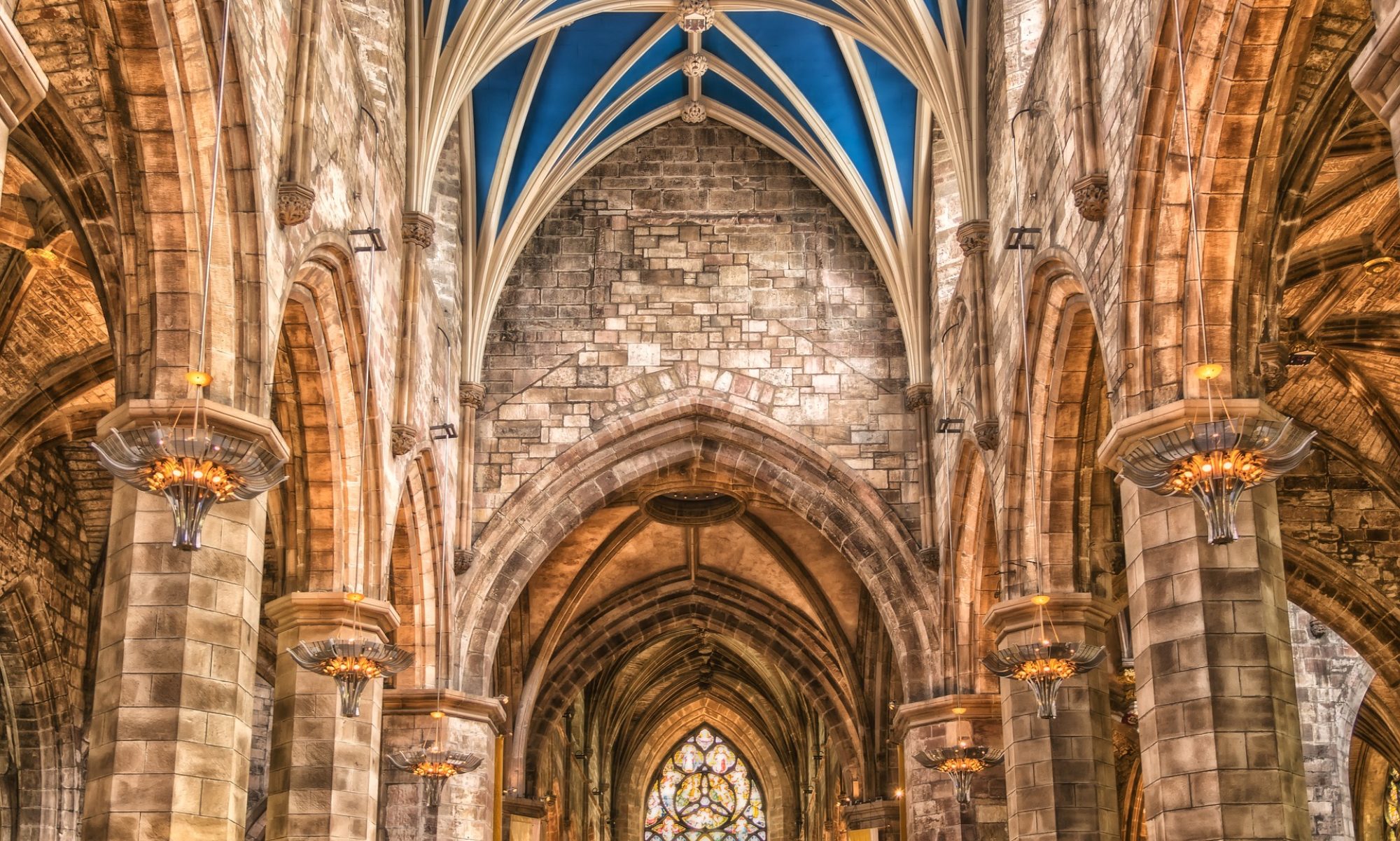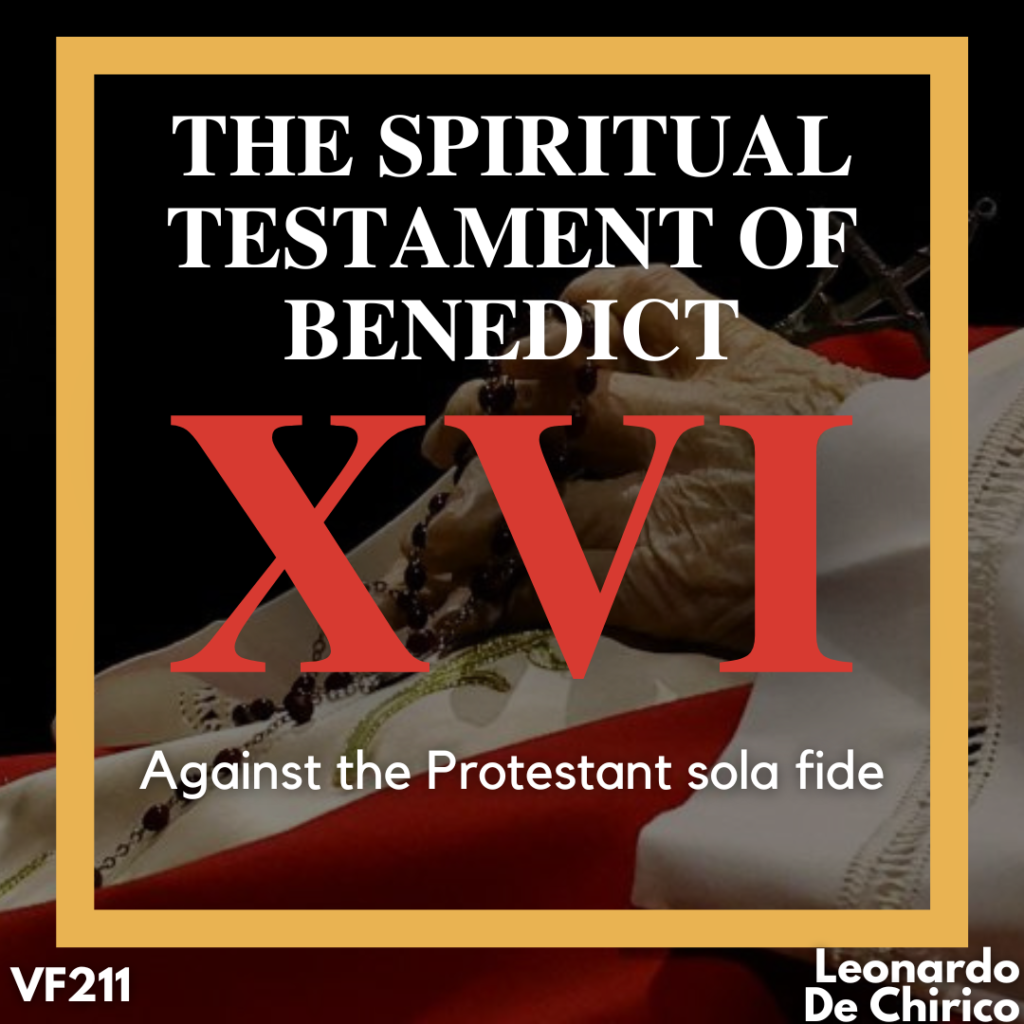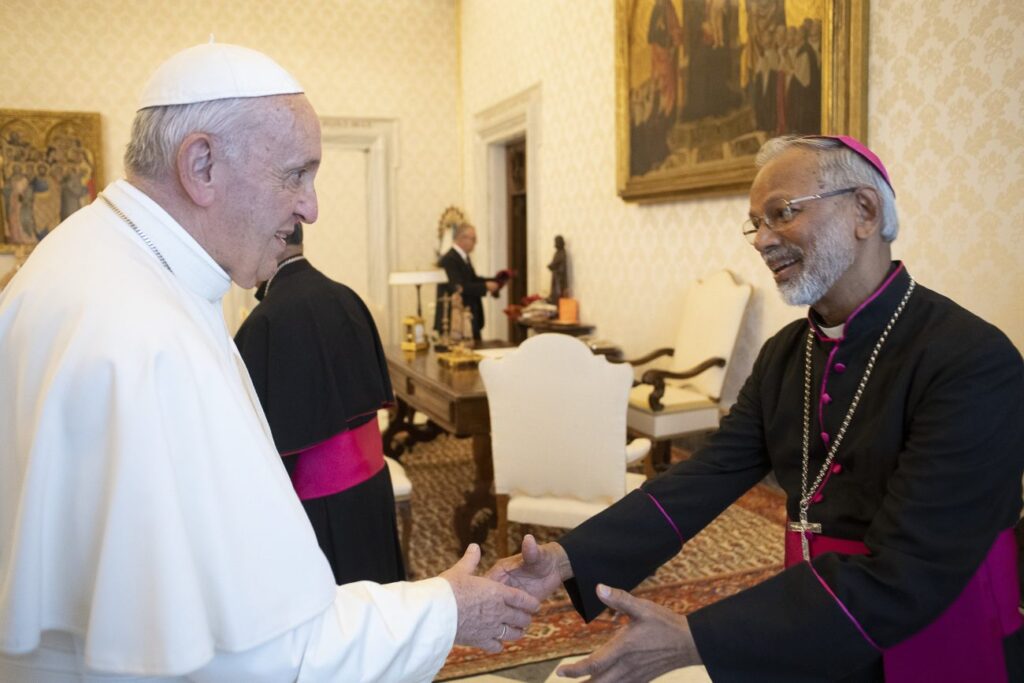Opening a book by Henri Blocher is like being invited to a wedding dinner. It is a theologically and culturally rich, tasty, and challenging experience. I consider Blocher among the top four living evangelical systematic theologians, along with John Frame, Paul Wells and Pietro Bolognesi. So, the release of his latest book La doctrine de l’Église e des sacrements, vol. 1 (Vaux-sur-Seine: Edifac, 2023), is a feast for theology, all the more so because it is a work (the one on ecclesiology) long awaited by the Parisian theologian (while we wait for the second volume on the sacraments).
The book consists of two parts. In the first, Blocher expounds on the biblical data, while in the second, he analyzes three types of church conceptions and models: the Catholic, the Reformed (paedobaptist) and the Confessing (credobaptist). This article will gloss over much of the book to focus on the section regarding Roman Catholic ecclesiology.
Blocher does not enter the conversation as a novice. In his long theological career, he has participated in international and national (French) dialogues between Catholic and evangelical theologians, and was among the leading architects of the 1986 World Evangelical Fellowship (now Alliance) “Roman Catholicism. A Contemporary Evangelical Perspective”, edited by Paul G. Schrotenboer (Grand Rapids, MI: Baker Publ., 1998), which contains a solid evangelical assessment of Roman Catholicism. In this section of his book, Blocher offers a thoughtful theological analysis that is the fruit of a lifetime of study and interactions with Roman Catholic theology.
Methodologically, in addition to Roman Catholic magisterial texts (above all Vatican II’s Lumen Gentium), Blocher constantly interacts with Y. Congar (“a theologian of exceptional breadth and finesse,” p. 108), A. Dulles, H. De Lubac, B. Sesboüé and W. Kasper: practically the best and most representative Roman Catholic ecclesiological reflection since the Second Vatican Council. In the background, there is a constant focus on Thomas Aquinas, who “embodies the Catholic option in theology” par excellence (p. 109). Among evangelical authors, Blocher acknowledges a particular debt to Alain Nisus (p. 7), author of L’Église comme communion et comme institution. Une lecture de l’ecclésiologie du cardinal Congar à partir de la tradition des Églises de professants (Paris: Cerf, 2012): a “fundamental work” (p. 108, n. 2). In the Protestant camp, Blocher treats Vittorio Subilia’s work, e.g. The Problem of Catholicism (London: SCM, 1964) and Le Nouveau Visage du Catholicisme (Genève: Labor et Fides, 1968) with great respect as it expounds an “in depth critique of conservative Barthian inspiration” (p. 105). Blocher reads Subilia’s interpretation of Roman Catholicism very carefully and generally approvingly, except to point out that for the Italian Waldensian theologian, his rejection of Catholic temple theology also means the Barthian rejection of the “deposit” of biblical revelation (pp. 150-151). For Blocher, the restlessness of dialectical theology concerning the inspired status of Scripture is not the evangelical position: while the latter criticizes the Roman Catholic reconstruction of the temple system (with its sacerdotalism, ritualism and church mediation), it receives the Bible as the written Word of God, the stable and reliable record of divine Revelation.
Blocher’s analysis of Roman Catholic ecclesiology is an ordered one. First, he focuses on the “heart” of it, that is, the conception of the church as a “continuation of the Incarnation” in its various articulations (body of Christ, mystery, sacrament, church and Mary). He then dwells on the “main dualities” present in Catholic ecclesiology (institution and community, pilgrimage and glory, church and society); third, he suggests four critical remarks that summarize an evangelical evaluation: 1) the exaltation of the human, 2) the attack on God’s rights, 3) the monophysite temptation, 4) the weakening of the significance of the biblical “once-and-for-all.”
At the “Heart” of Roman Catholic Ecclesiology
Given the breadth and historical stratification of Roman Catholic ecclesiology, one could get lost in the meanderings of individual aspects. To prevent the risk of an atomistic reading, Blocher argues that Roman Catholic ecclesiology has a pulsating “heart” from which everything else radiates and that this heart is the conception of the church as a “continued incarnation” or prolonged incarnation. It is affirmed in the Catechism of the Catholic Church (no. 521), evoked by Lumen Gentium (nos. 8, 48 and 52), and argued with different nuances and accents by such modern theologians as J. Möhler, J.H. Newman, M.-J. Scheeben and Y. Congar. Some emphasize the “theandric” (divine and human) nature of the church, some the almost symmetric convertibility between Christ and the church, some the mystical indwelling of Christ in the church, others the continuation of the story of Jesus in the church’s sacramental life …
It is true that in recent years there are those who, like Congar, have argued that the relationship should be thought of with the mediation of pneumatology, i.e. the church continues the incarnation of Christ in the Spirit. Others, like W. Kasper, are more reticent to employ it and, if they do, use it with sophisticated clarifications. The ecclesiological point is that the church as an extension of the incarnation remains a “pertinent” (p. 110) category for touching the heart of the Roman Catholic church’s self-understanding. From it, the following definitions of church find their roots and framework of reference:
– the “body of Christ” (pp. 114-115) which Catholicism bungles by not correctly distinguishing the “head,” i.e., Christ, and the “body,” i.e., the church, and thus maintaining the ambiguity of the “total Christ” introduced by Augustine.
– the church as “mystery” (pp. 115-116); Roman Catholicism uses it plastically and fluidly to speak of the actualization of Christ in the church and His making himself present in the church’s sacramental life.
– the church as “sacrament” (pp. 116-117); Catholic theology employs it in a participatory way to emphasize the co-participation between Christ and the church and the sacramental mediation of grace.
– the church as a reality defined by the Marian principle (pp. 120-122) through which Mary is seen as the “type” of the church and the church is seen as prototyped in Mary.
As a systematician, Blocher aims to penetrate Catholic ecclesiology, not just by piling up data. He dissects its internal structure and tries to grasp the connections that legitimize Rome’s high view of itself and its inflated prerogatives.
Roman Catholic Dualities
Relying on Congar, Blocher recognizes that Roman Catholic ecclesiology is crossed by some dualities that give it both solidity and elasticity.
First is its dialectic between institution and community (pp. 122-131). In the Roman Catholic conception of the church, there is the clergy and the laity, the hierarchical institution and the Catholic communion, the Roman monarchical primacy and the universal catholicity, the teaching church and the hearing church, the sacramental structure and the people of God, the perfect society and the gathered humanity, the universal church and the particular church. The duality is not a matter of degrees but of a genuine diversity of essence between the two poles.
This first duality grounds the second, which allows the Roman Catholic church to think of itself simultaneously as militant and triumphant, as an “already” all accomplished and a “not yet” in the making (pp. 131-134). Its unity, holiness, catholicity and apostolicity are thought of within this elastic duality. In doing so, Roman Catholic ecclesiology has developed an outstanding ability to bring opposites together: a robust theology of complexio oppositorum (p. 133), i.e. unity of opposites.
The third Roman Catholic duality involves the church and society (pp. 134-139), the internal and external boundaries, its juridical constitution and its all-encompassing horizon. The Catholic church thinks of itself at the center of an ecumenical project that embraces the “separated brethren” (no longer considered heretics or excommunicated), viewing in them “elements” of the church and at therefore including them within an even bigger “catholic” vision that envelops all of society. Rome wants to “dialogue” with the world to pilot its progress toward unity. After Vatican II, it is no longer a matter of reconstructing a lost “medieval synthesis” (p. 138), but of encouraging increasingly advanced forms of catholicity.
Four Critical Evangelical Remarks
Blocher acknowledges that this system has “great persuasive power” (p. 139) but is based on “insufficient” biblical foundations that have led to “ambiguities in its construction” (p. 113). He suggests four observations for critically evaluating Roman Catholic ecclesiology from a biblical perspective. Let us briefly review them:
1. The too-human exaltation of the human (pp. 140-148)
As the Bible teaches, one recognizes the tree by its fruit. If one looks at the “products” of Catholic ecclesiology such as the inflated Mariology and the institutionalized papacy, one cannot help but take note of the departure from biblical principles that led to the “impossibility of scriptural verification of dogmas” (p. 141). In Roman Catholicism, biblical data are used in a manner that robs Scripture of its full sovereignty as a critical instance over the church. Historical processes and evolutions of dogma have taken over from biblical “evidence” resulting in a construction that has lost sight of the roots of God’s Word. In exalting what is human, it endangers (with the risk of breaking?) the distinction between Creator and creature.
2. The attack on God’s rights (pp. 148-151)
Blocher aligns himself with the classical Protestant (also Barthian) critique that Roman Catholicism attacks God’s freedom and robs him of his glory, which is then attributed to the creature, of whom Mary is the emblem and the church the institutional embodiment. The three great maxims of the Protestant Reformation (sola Scriptura, sola fide and sola gratia) capture the heart of the evangelical critique in that they want to safeguard God’s “jealousy” (p. 149). Following Herman Dooyeweerd’s categories of the nature-grace ground motif, this does not mean pitting nature and grace against each other (the risk of Barthianism) or even synthesizing them (the risk of Roman Catholicism): both are symmetrical errors. It means being guided by Scripture that, in dealing with the relationship between God and humankind, accentuates “the language of exclusion over that of inclusion” (p. 149).
3. The Monophysite (one nature, namely the divine one) temptation (pp. 151-152)
The concept of the church as a continued incarnation touches Christology and, in particular, the hypostatic union. In Roman Catholicism, a “larval monophysitism” manifests itself, i.e., the church is attributed divine traits that override human ones. Blocher agrees with Congar that the disagreements between Protestants and Catholics have their root in the different role attributed to Christ’s humanity and, therefore, must come to terms with the interpretation of the Chalcedonian dogma, whereby the two natures of Christ are confessed as related “unconfusedly, unchangeably, indivisibly, inseparably”.
The point is that the problem with Roman Catholicism is not only in the different understandings of Christ’s work but also in His person. The overemphasis on Christ’s divinity extended to the Church is at stake. Here, respectfully, a note should be made to Blocher. Earlier, he had spoken of an important agreement between Protestantism and Catholicism on the dogmas of the Trinity, incarnation, virgin birth and resurrection. At the same time, the difference is traceable to the areas of grace and sacraments (above all: the eucharist). In support of this view, he cites works (such as those by Geisler and Mackenzie and those related to the French Catholic-Evangelical dialogues, p. 140, n. 1)[1] that are atomistic, i.e., they put together pieces of the issue without offering an overall framework to understand the big picture theologically. From these books it appears that Roman Catholicism and Protestantism have in common the same Christology and Trinitarian theology.
In contrast, the matter of contention concerns soteriology and ecclesiology. But then, as we have seen, Blocher argues that the underlying problem lies in the different interpretation of the Christology of Chalcedon, which, contrary to earlier assertions, is all about Christology (and implicitly Trinitarian theology) and not only about grace and the church. Blocher seems to move between an atomistic and a systemic understanding of the underlying problem. While the entire section of the book tends toward the latter until concluding with the critical statement that “Roman theology is too little Trinitarian” (p. 156), he fails to see the apparent limitations of the former. Perhaps it is the case that the unresolved issues with Roman Catholicism appear more clearly in soteriology and ecclesiology but are rooted in deeper Trinitarian and Christological differences.
4. The Weakening of the Significance of the Biblical “once-and-for-all” (pp. 152-156)
The last suggested critical remark concerns the erroneous Roman Catholic understanding of the biblical éphapax: once-and-for-all. Driven by an eagerness to actualize and make grace present in the church’s action, Roman Catholicism makes fluid and open-ended what should instead be considered a once-and-for-all event: both the once-and-for-all events of the cross and the ascension of Jesus Christ mark a watershed in the economy of salvation. Since the Roman church is thought of as prolonging the incarnation, Christ’s vicar is the pope, and Christ’s grace is the sacraments. Quoting Tertullian, Blocher argues that the only vicar of the risen Christ is the Holy Spirit (p. 154) and that, if anything, the only prolongation that took place is the Word of Christ, i.e. Scripture.
Blocher’s analysis of Roman Catholic ecclesiology should be read and studied by all evangelicals who aspire to “dialogue” with Roman Catholicism at every level: local, national, and international. They would gain depth in their ability to penetrate the “heart” of the Catholic system without getting lost in embarrassing theological naiveté that damage the cause of evangelical witness. With his style and finesse, Henri Blocher has enriched contemporary evangelical theology with a contribution that lives up to his reputation.
[1] N.L. Geisler & R.E. Mackenzie, Roman Catholics and Evangelicals: Agreements and Differences (Grand Rapids, MI: Baker Academic, 1995) and P. Le Vallois & D. Bresch, Des catholiques et des évangéliques se questionnent mutuellement (Charols: Excelsis, 2014).





